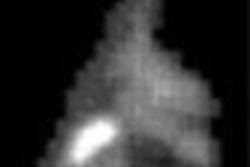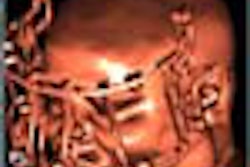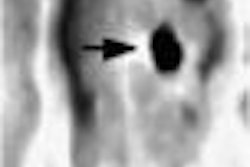Innovations in nuclear medicine occur so rapidly that researching and implementing new lifesaving procedures becomes routine for nuclear medicine technologists.
"You have to keep up with the technology," said Donna Newman, B.S., R.T. (R) (N), CNMT, who is a staff nuclear medicine technologist for Meritcare Medical in Fargo, ND. "A physician will call and say he read about a procedure in a journal and that he has a patient that the procedure would be appropriate for. And we say okay, give us two days to research that procedure. Two days later, you are mixing the chemistry and performing the procedure."
Newman said new research in oncology has made it possible to eradicate certain cancers that were previously too elusive to treat.
"We are able to label antigens with an isotope and a radioactive tracer to show exactly where the cancer is," she explained. "I am very excited about the field. We are making huge leaps to advance the treatments of cancer and heart disease."
Nuclear medicine is used in the diagnosis, management, treatment, and prevention of serious diseases. Nuclear medicine imaging procedures often identify abnormalities early in the progression of a disease, long before medical problems are apparent with other diagnostic tests.
Nuclear medical technologists use small amounts of radioactive materials or radiopharmaceuticals, which are substances that are attracted to specific organs, bones, or tissues. The radiopharmaceuticals used in nuclear medicine emit gamma rays that can be detected externally by special types of cameras, such as gamma or PET.
These cameras work in conjunction with computers used to form images that provide data and information about the area of the body being imaged. The amount of radiation from a nuclear medicine procedure is comparable to that received during a diagnostic x-ray.
Nuclear medicine offers procedures that are helpful to a broad span of medical specialties, from pediatrics to cardiology to psychiatry. Children commonly undergo nuclear medicine procedures to evaluate bone pain, injuries, infection, or kidney and bladder function.
Common nuclear medicine applications include diagnosis and treatment of hyperthyroidism (Grave's Disease), cardiac stress tests to analyze heart function, bone scans for orthopedic injuries, lung scans for blood clots, and liver and gall bladder procedures to diagnose abnormal function or blockages.
Newman was a radiographer for a few years in the early 1990s when she was recruited to become a nuclear medicine technologist. Then as now, a shortage of qualified technologists existed in nuclear medicine. Salaries have increased about 20 percent during the past four years and starting pay is about $20 an hour. Positions are available in hospitals, such as the 400-bed facility where Newman works. She said she likes the hospital because of the variety of patients and procedures she encounters. Other opportunities are at oncology and cardiology clinics and free standing imaging centers.
Because of the shortage, Newman received on-the-job training that led to certification in nuclear medicine, but she would not recommend that course for those who might be interested in the field. "You would work all day and come home and study at night," she explained. "It was 4,000 hours in four years, with no extra pay for on-call hours or overtime."
She said an educational path that leads to certification in nuclear medicine could be a bachelor’s degree with studies in chemistry and physics, which provides students with the basics and possibly another year of study in nuclear medicine. Another path is radiologic technology school and an additional year of study specific to nuclear medicine, Newman said.
She said a good candidate for nuclear medicine is a meticulous person who is good with details. Someone who loves to learn. Someone who really likes people since one must stay with patients for the whole test.
"You are with people who are really sick and have heart disease or cancer. Some of them have just been diagnosed and are angry and afraid. You have to be a compassionate person who is willing to help people gain perspective. You also have to help them understand that this is not the end of the world," she said.
By American Society of Radiologic TechnologistsJune 2001




















